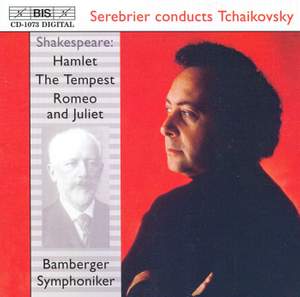Serebrier conducts Tchaikovsky
Music inspired by Shakespeare's plays
Bamberger Symphoniker, José Serebrier
What a good idea to couple Tchaikovsky's three fantasy overtures inspired by Shakespeare. José Serebrier writes an illuminating note on the genesis of each of the three, together with an analysis... — More…
CD
$14.75Downloads
What are FLAC and MP3?Contents
Tchaikovsky: Hamlet - Fantasy overture, Op. 67
Work length18:35
Album only
Album only
- Bamberger Symphoniker
- José Serebrier
Hamlet, Op. 67
Track length18:35
Album only
Album only
Tchaikovsky: The Tempest, Op. 18
Work length21:58
Album only
Album only
- Bamberger Symphoniker
- José Serebrier
The Tempest - Symphonic fantasy overture, Op. 18
Track length21:58
Album only
Album only
Tchaikovsky: Romeo & Juliet - Fantasy Overture
Work length21:14
Album only
Album only
- Bamberger Symphoniker
- José Serebrier
Romeo and Juliet Fantasy Overture (3rd version, 1880) [1880 Version]
Track length21:14
Album only
Album only





